Looking at Sennelier Extra Soft Pastels
A Sennelier extra soft pastel is composed of high quality pure pigment grounded with a natural transparent binder resulting in rich and vibrant colour that transfers well to a surface. In this exercise, I have looked at how these pastels perform and have chosen a very familiar Pastel Painting by Degas – the Bathtub – as the subject matter. This is an exploration of the media rather than a study of the techniques that Degas employed.
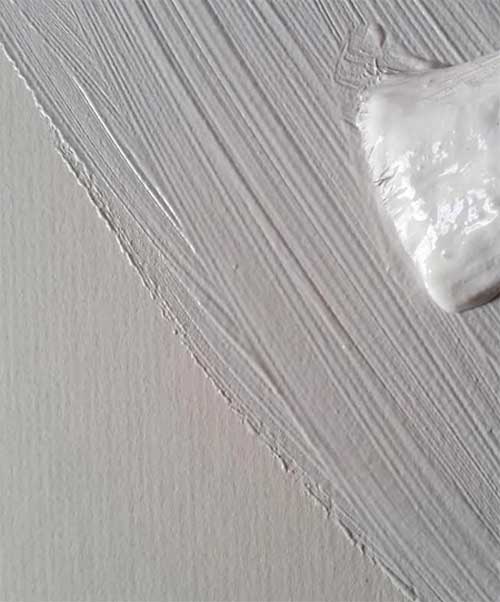
Sennelier Pastel Primer
The Bathtub is a large Pastel piece measuring around 70x70cm so I have scaled this down a bit to 50x50cm. As most pastel papers do not come in this size, I primed a mount board with Sennelier Pastel Primer. The Primer gives a surface the perfect ‘key’ for pastel and so can be used to turn a range of boards into a surface for pastel painting.

Using Acrylic Paint to colour the Sennelier Pastel Primer
Degas used a dark ground so, for this piece, I went over the white Primer with a thin covering of the primer mixed with a little Acrylic Paint. Take care not to obliterate the tooth that the primer has given the surface though.

Gridding up the print out ready to draw from
I printed out ‘The Bathtub’ onto an A4 piece of paper as this size can be printed on any home computer yet is still big enough to see all the detail. With a coloured pencil, square up the print-off with as many squares as you feel you need to get the drawing correct. If you are working from a book, simply draw your grid on some tracing paper and lay it over the image.

The resulting charcoal drawing
Take your painting surface and grid up with the same number of squares scaled up to fit the surface and then draw exactly what you see in each square. I used charcoal to make the drawing and then blocked in areas, again with the charcoal, using broad strokes or cross-hatching to achieve the dark shadows that appear in the original.
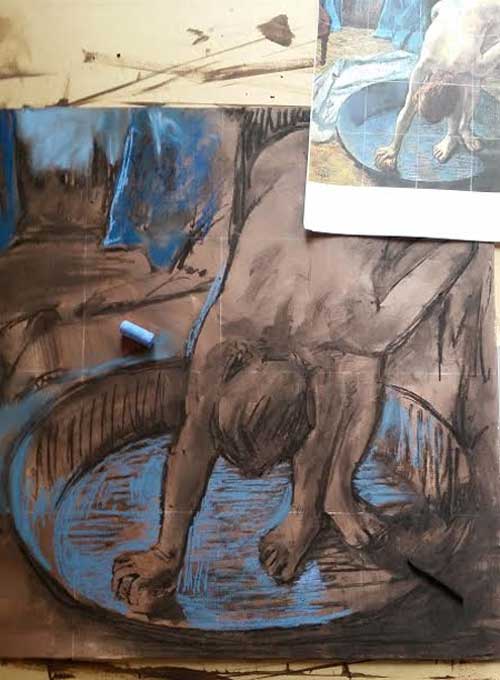
Applying shades of blue Sennelier Pastels to the surface
Choosing an area, look at the way the colours appear – which colours lay over or next to which colours – and pick out the pastel colours that are closest to these, laying down in the same order as you perceive them to have been laid down in the original artwork. Use short strokes and do not blend. Pastel is pure pigment in a stick form so the colour will be exactly the same on the surface as in the stick. Use this immediacy and do not try to achieve a colour by mixing with over blending. In the Sennelier Paris Collection, there are some beautiful blues including these ones I used – Cerulean no.264, Cobalt no. 356 and Intense Blue no. 468.
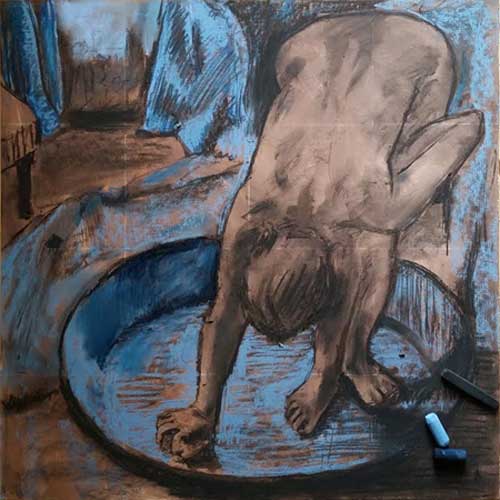
Build up the colours as you see them.
Degas let lower areas show through so do not be tempted to simply block in areas with solid colour. Beginning to introduce the skin tones Degas appears to have treated the skin a little differently and I found the best way to achieve this was to apply colour and blend slightly to define the form and then re-introduce interesting loose marks in pure, unblended strokes.
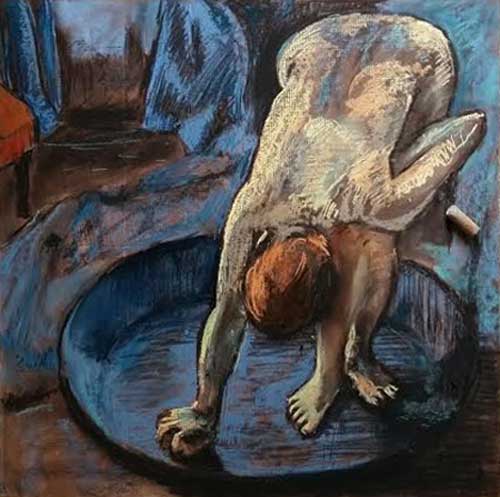
For this particular piece, I would not recommend using a finger to blend as the grease from your hands dulls and smoothes out the interesting marks that you want to keep in as they are really what the work of Degas is about. A stump, tortillon or even the end of a ‘round-ended’ pencil works brilliantly.
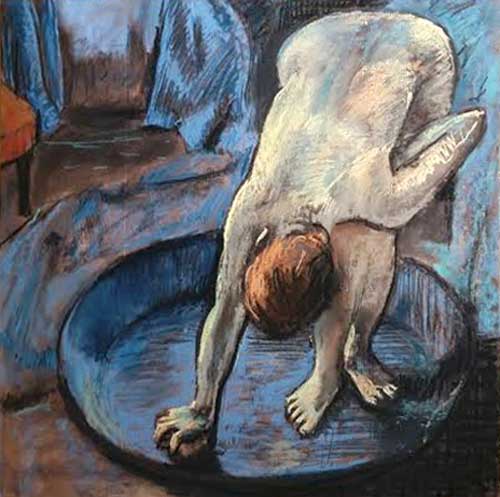
When adding in the final marks, keep them as bright and sharp as possible. Use strong, short strokes of pure pastel with no blending at all. If you have carefully observed the reference, they should sit nicely next to or on top of colours that really let them zing out. Degas often used steam to ‘set’ layers of pastel. Today there is an abundance of fixatives on the market although it should be noted that they are not designed to completely ‘harden’ the surface but just to hold in place loose material and make the pastel less likely to move or smudge. Framing a Pastel Painting behind glass is the only fool-proof way to protect it.

When the ground is prepared properly, a little goes a long way with the Sennelier Pastels as they do not crumble away to nothing as some soft pastels can but transfer to the surface smoothly and with a strong colour. If you are going for a Sennelier set, just remember that the half sticks do not come with wrappers so you will need to refer to the colour chart on the box if you want to pick out an exact colour or find out which colour you used to replace at any time.

